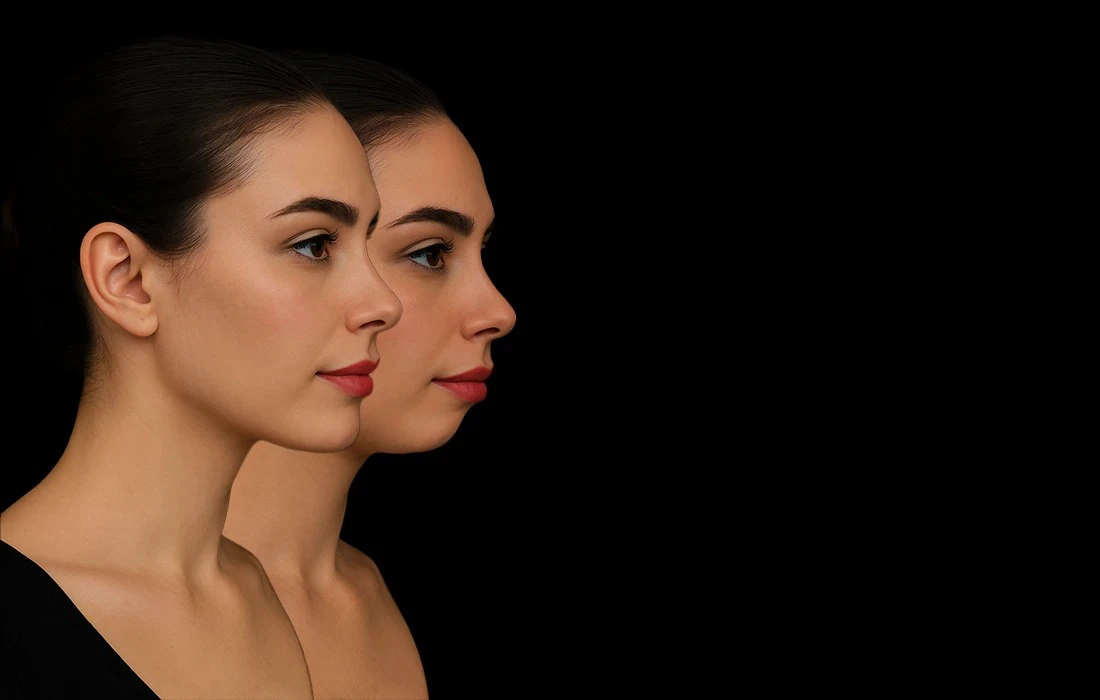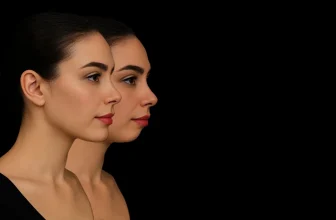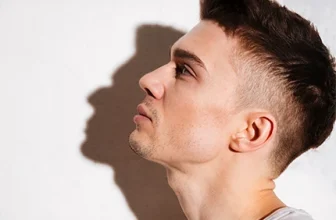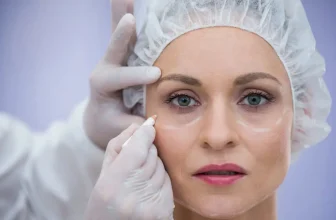Chin Filler vs Genioplasty: Which Option Is Right for You?

When people think of facial beauty, the first features that usually come to mind are the nose, lips, or eyes. But true aesthetic balance is not about individual parts — it’s about how they relate to each other. Every facial feature influences the overall harmony, and the chin plays a critical role, especially in profile view.
A receding chin can make the nose appear larger. A weak or undefined jawline can create a sense of imbalance in the lower third of the face. In fact, the shape of the chin can even influence how a person is perceived socially. Strong, confident, assertive… or timid, indecisive, passive — these impressions are often shaped by jaw structure. That’s why chin aesthetics is not just about appearance; it’s about restoring proportion, symmetry, and expression.
When Is Chin Aesthetics Recommended?
Chin procedures are commonly used in the following situations:
- A recessed or protruding chin
- A generally weak or undefined lower face
- Lack of harmony in profile view
- Fat accumulation or sagging under the chin
- Facial asymmetry
In addition to cosmetic concerns, some of these issues may also be related to functional problems such as biting or chewing.
Treatment Options
The right method depends on the patient’s anatomy, expectations, and the degree of correction needed. Chin aesthetics includes both surgical and non-surgical techniques. Each option has its own indications, advantages, and limitations.
1. Chin Augmentation with Filler (Non-Surgical)
- Material used: Hyaluronic acid-based fillers are most common; in some cases, calcium hydroxylapatite (CaHA) fillers are used.
- Goal: Enhance chin projection, define the jawline, and improve facial proportions.
- Procedure time: Around 15–20 minutes.
- Advantages: Fast, minimally invasive, reversible, and no downtime required.
- Limitations: Only adds volume; cannot correct bone-level deformities.
- Longevity: Effects typically last 12–18 months.
2. Genioplasty (Surgical Chin Enhancement)
- Indications: Severe under-projection or over-projection of the chin, asymmetry, or vertical chin deformities.
- Surgical techniques:
- Sliding genioplasty: The chin bone is cut and moved forward, backward, or downward.
- Implants: Synthetic implants (e.g., silicone, Medpor, titanium) are used to add volume.
- Anesthesia: Usually performed under general anesthesia.
- Recovery: 7–10 days of downtime; swelling may take 2–3 months to fully resolve.
- Advantages: Permanent solution with structural changes at the bone level.
3. Submental Liposuction (Double Chin Fat Removal)
- Goal: Remove excess fat under the chin to achieve a sharper jawline.
- Technique: Small cannulas are used to aspirate fat under local anesthesia or sedation.
- Best candidates: Individuals with good skin elasticity and localized fat accumulation.
- Recovery: Return to normal life in 3–5 days; final results appear after 4–6 weeks.
4. Combined Treatments and Profiloplasty Approach
- What is profiloplasty? A holistic evaluation of the nose, chin, and sometimes forehead to achieve overall profile harmony.
- Why does it matter? For example, a rhinoplasty alone may not be enough if the chin is recessed — the nose may still appear large. True balance comes from proportion.
- Common combinations:
- Rhinoplasty + chin filler
- Submental liposuction + filler
- Genioplasty + orthognathic surgery (in advanced cases)
Frequently Asked Questions
- Is the result permanent? Fillers are temporary and usually last 12–18 months. Surgical procedures offer permanent results.
- Is the procedure painful? Filler treatments are performed under local anesthesia and are generally painless. Surgical options may involve mild discomfort post-op.
- What is the recovery time? Patients can resume daily life immediately after fillers. Surgical recovery may take a few days to weeks depending on the technique.
- Will it look natural? Absolutely — when performed with proper planning and respect for natural facial proportions, chin enhancement delivers subtle and harmonious results.
Conclusion
In aesthetics, beauty is not defined by isolated features — it’s defined by proportion. You can have a perfectly shaped nose, but if your chin lacks projection, that nose may still look too dominant. Chin enhancement helps complete the facial profile and brings strength and balance to your overall expression.
If you’ve ever looked in the mirror and felt like something was missing — even if you couldn’t pinpoint what — that “something” might just be your chin.







